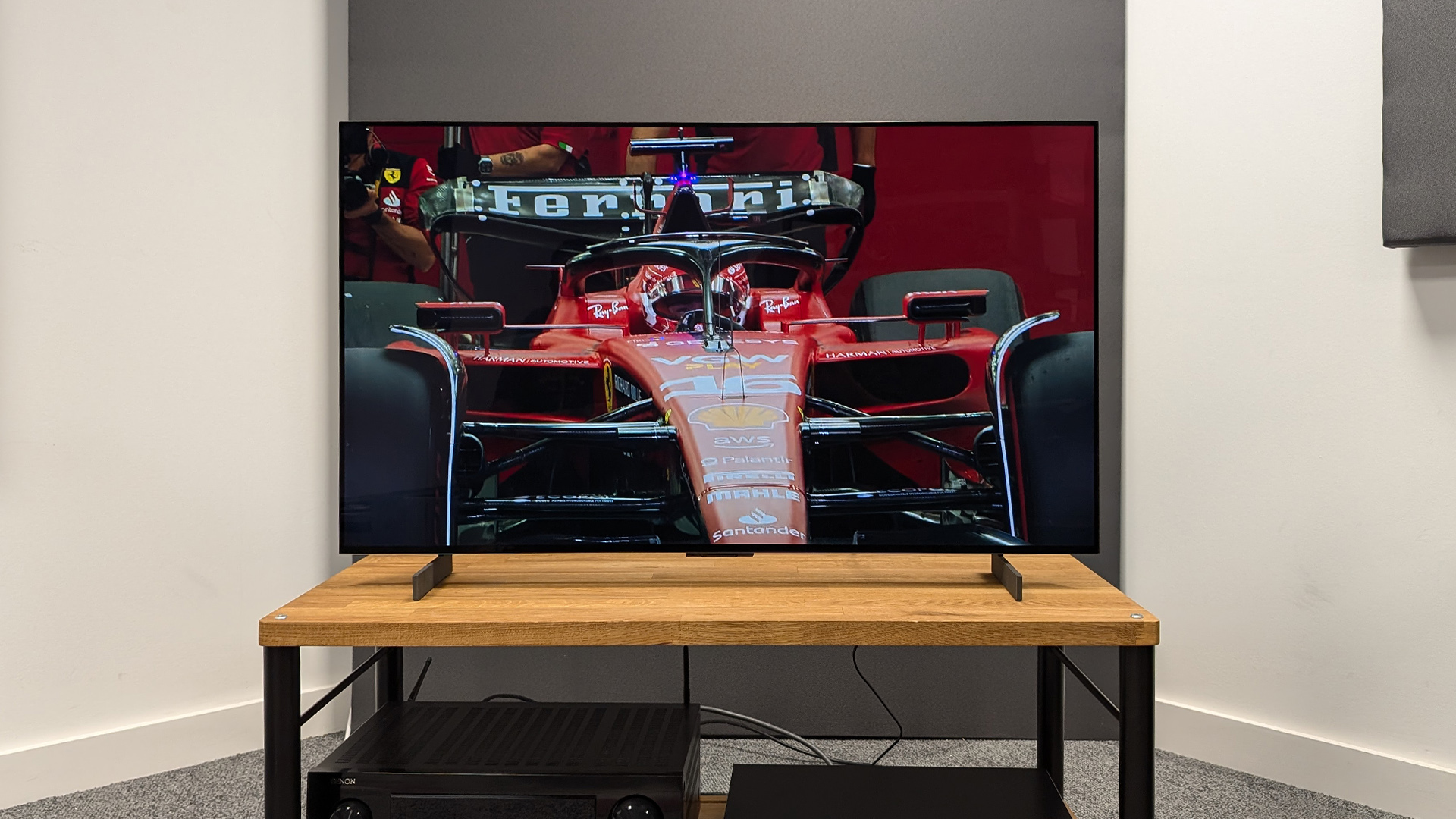
The 42-inch LG C4 is the smallest size in the tech giant’s current step down line of OLED TVs. It’s also a direct successor to the LG C3, a What Hi-Fi? Award-winner that up until now has been the small OLED we recommend to most people.
Does it live up to its predecessor’s legacy? Thankfully, after putting it through its paces in our viewing rooms we’re happy to confirm the 42-inch LG C4 is a fantastic OLED TV for those short on space, or simply don’t fancy having a giant TV take up their entire living room. But there are a couple of small caveats you should be aware of before buying one.
Price
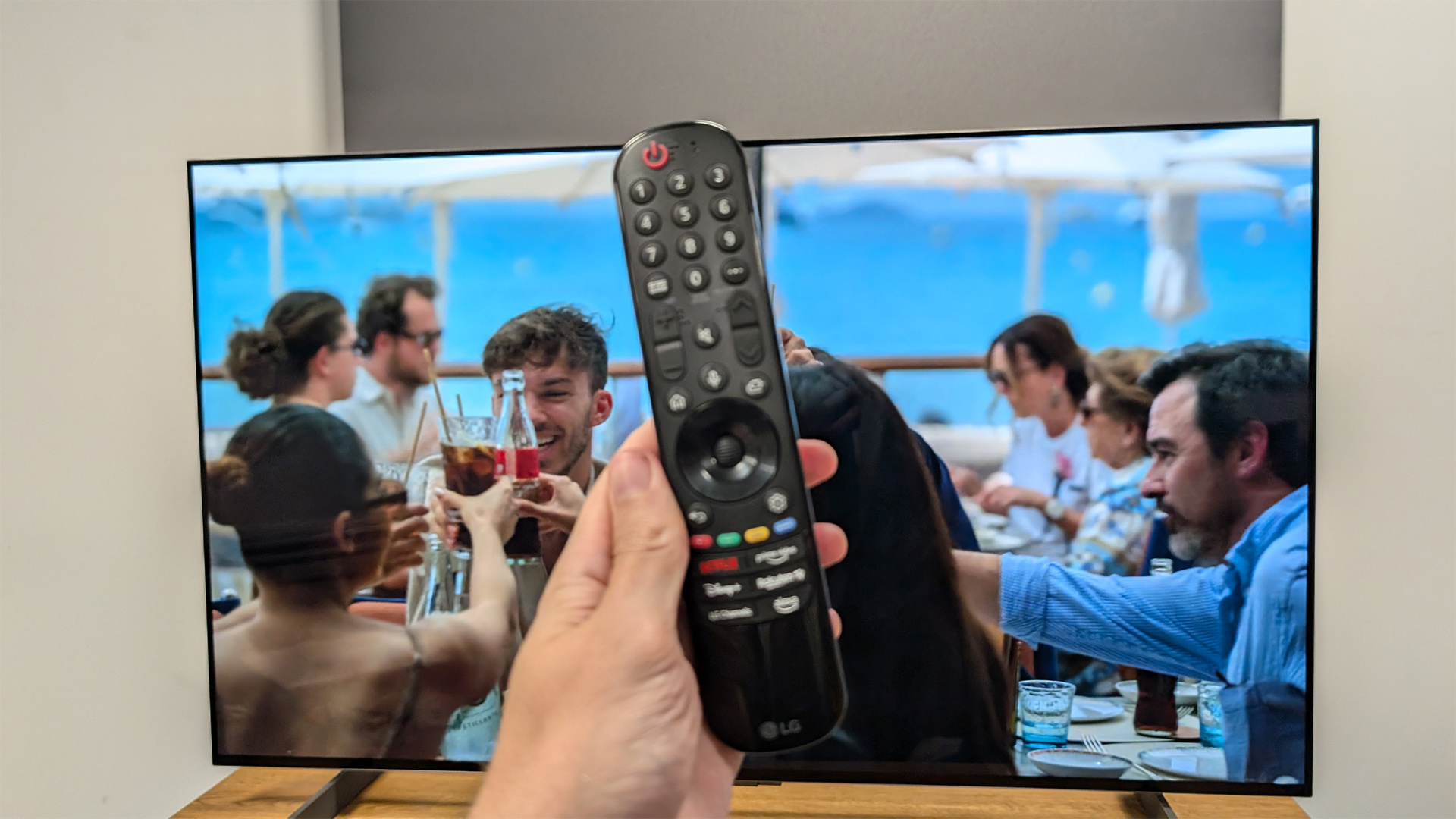
The 42-inch LG C4 launched with a £1400 / $1499 / AU$2195 suggested retail price. This makes it moderately cheaper than its predecessor, the LG C3 which retailed for £1500 / $1400 / AU$2599 at launch.
But the 42-inch LG C4’s price has already dropped massively, so you can often find it retailing for significantly less. Over the past month, we’ve seen it regularly available for £1099 / $1119 / AU$2195. But at the time of writing it was selling for as little as £870 / $999 – which makes it the cheapest option if you want a 42-inch OLED TV despite being younger than most of its rivals.
The 42-inch Philips OLED809, which isn’t available in the US, launched at a slightly cheaper £1399 in the UK and currently retails for £999. The 42-inch Sony A95K, which is Sony’s current small OLED, despite launching a couple of years ago, currently retails for £1299 / $1299 / AU$2199.
Design
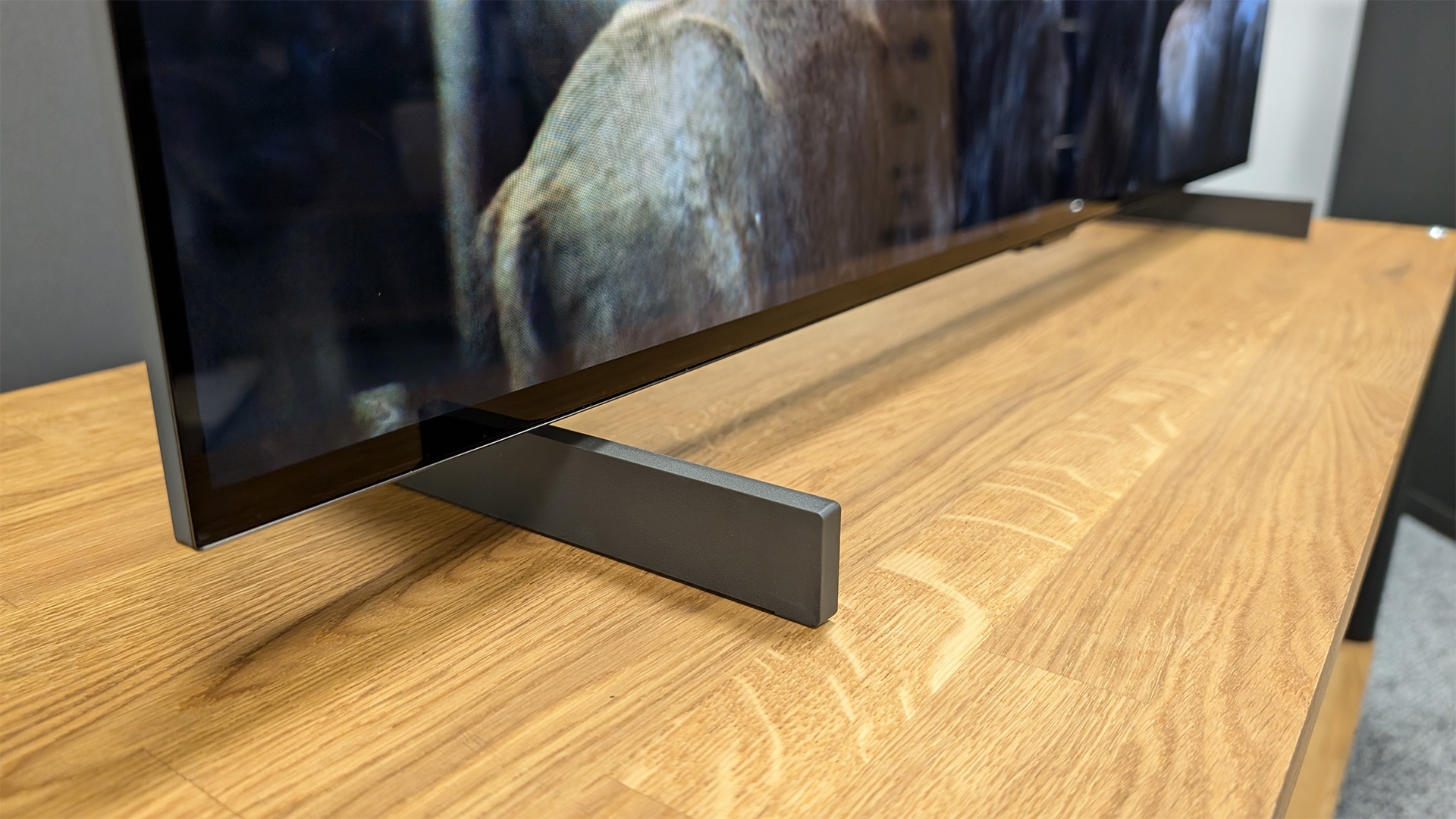
Taking the 42-inch LG C4 out of the box, we immediately notice a number of design differences from its larger siblings. For starters, rather than a central stand, it has twin feet that are clipped into the TV’s bottom, rather than screwed in.
The placement means there’s just enough space to slot a small soundbar between them, but the fact they can only be set to one height means you will want to measure before buying one. The dinky Sonos Beam (Gen 2) is the absolute maximum the set will accommodate before the soundbar starts blocking part of the screen.
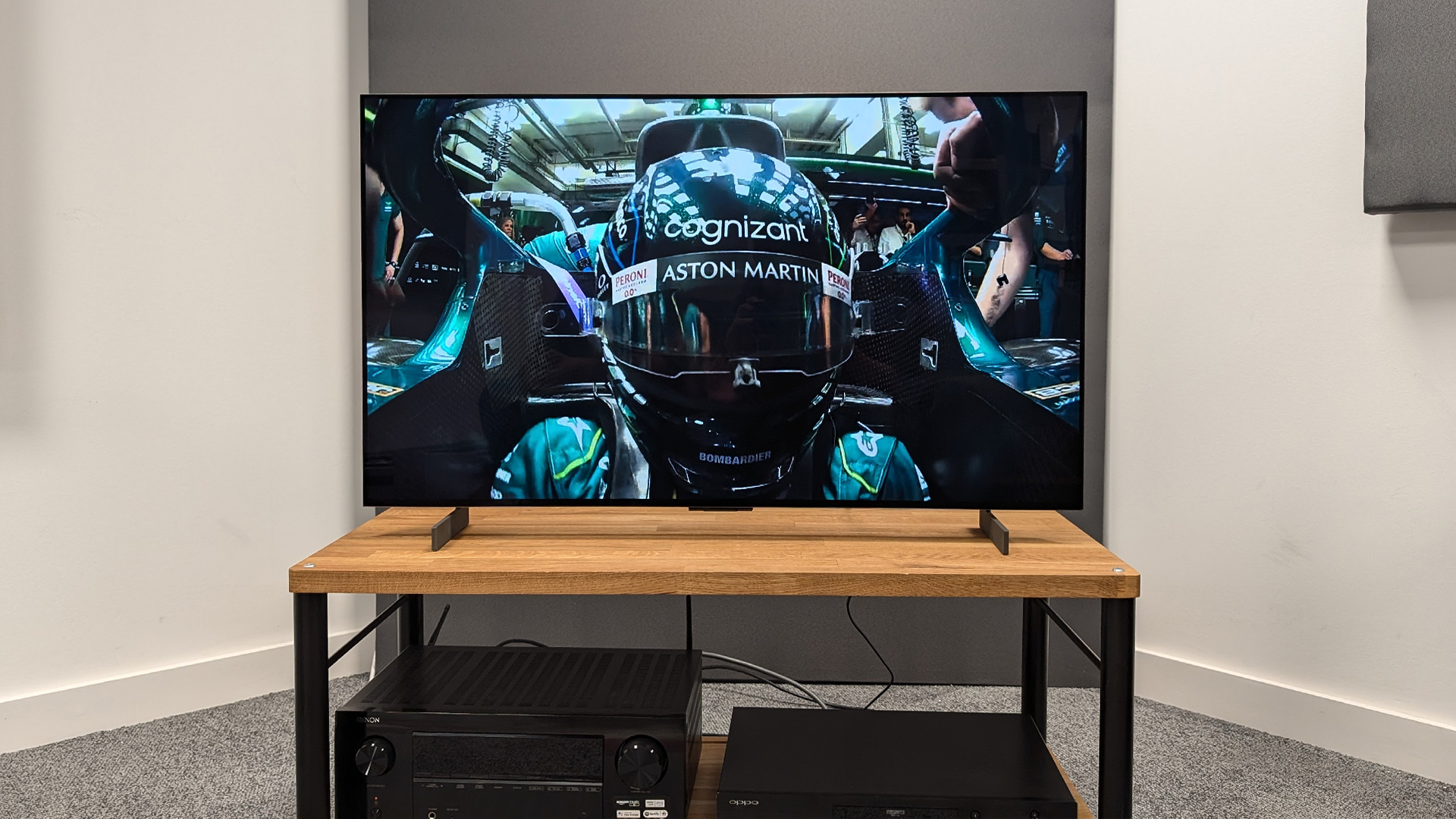
Screen size 42 inches (also available in 48in, 55in, 65in, 77in, 83in)
Type OLED
Backlight N/A
Resolution 4K
HDR formats HLG, HDR10, Dolby Vision
Operating system webOS 24
HDMI inputs x 4 (4 x 48Gbps HDMI 2.1)
Gaming features 4K/120Hz, 4K/144Hz, VRR, ALLM, Dolby Vision game mode, HGiG
ARC/eARC eARC
Optical output? Yes
Dimensions (hwd, without stand) 54 x 93 x 4.1cm
The back also has a matte black finish, rather than the fake stone finish seen on the larger models. Some may feel this makes the 42-inch C4 feel a little basic, but we actually prefer the basic black finish, as the plastic used feels just as robust and less garish. On top of that, as we have noted many times before, you’re not going to be spending an awful lot of time looking at the back of the TV, so the finish isn’t that important.
The three bigger quibbles we have with its design are to do with its port placement, power supply and remote. To accommodate its smaller dimensions LG has placed every single one of the 42-inch LG C4’s ports, HDMI and all, on its side. Normally this would be fine as on larger sizes there’s enough space for the cables to still be hidden from view.
However, on the smaller model the connected cables jut out of the side and were impossible to hide from view. As well as looking a little ugly – the What Hi-Fi? team are sticklers for proper cable management – it also means you’ll need to factor in an extra inch to accommodate the cable sticking out when placing the set if you plan to connect a soundbar or games console.
Like all the C4 TVs we’ve seen, the 42-inch model’s power cable is non-removable, and oddly short. This means the TV needs to be placed fairly close to a powerpoint. It also means you’ll need to get the TV serviced if the cable gets damaged – which can easily happen if, like one of our testers, your cat has an odd love of chewing cables.
The remote is identical to other C4 models. From a functionality point this is fine as it includes shortcut keys to all the common streaming apps and a useful pinwheel for quickly scrolling through menus. The Wii-mote-like motion control option also remains, which lets you navigate the TV using an on screen cursor. But the shiny plastic used still feels cheap, and despite our constant requests there’s no backlight, which makes using it in dark conditions awkward.
Features
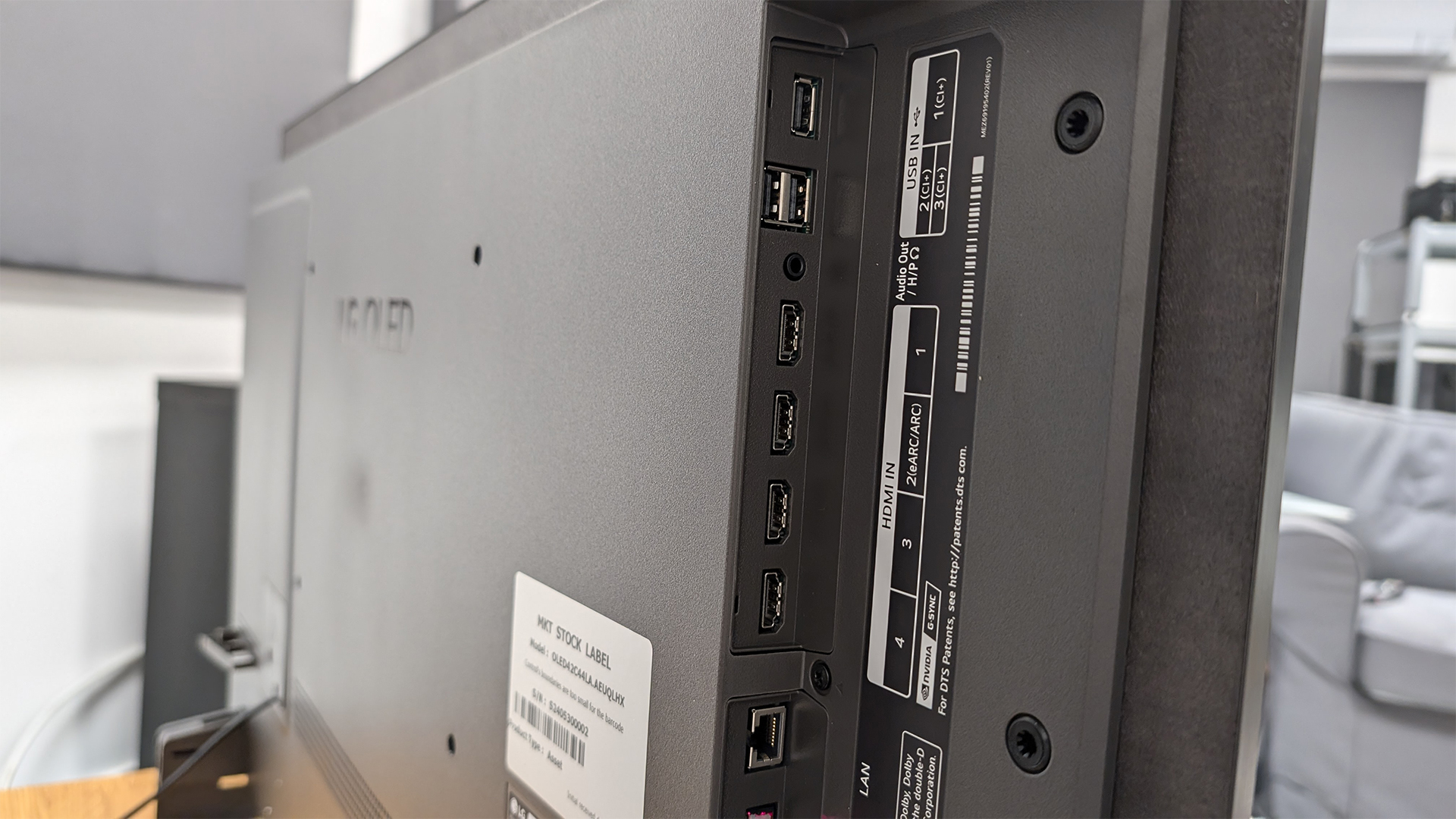
Though there are some small annoyances with the design, there’s no denying LG has done a stellar job packing the 42-inch C4 to the brim with all the features movie fans, gamers and general TV watchers will need.
The 42-inch C4 doesn’t feature the Award-winning micro lens array (MLA) tech seen on the premium LG G4. But LG has still managed to increase the display’s max brightness – which is a key theme for step down OLEDs this year.
But the bigger deal is that, despite its smaller dimensions, the 42-inch C4 has identical connectivity to its larger siblings. This means you still get four HDMI 2.1 inputs with 48Gbps bandwidth support for 4K/144Hz gaming with VRR and ALLM supported. This is complemented by three USB sockets, aerial and plus optical connections.
The inclusion of four HDMI 2.1 inputs makes it a great option for gamers, as current generation PCs and games consoles require the connectivity to run at full speed. Most TVs, including the Sony A90K and Bravia 8, and the Philips OLED809, only have two HDMI 2.1 inputs, one of which doubles as the eARC input needed to connect a Dolby Atmos soundbar, by comparison.
Dolby Vision gaming support is another atypical feature that will delight Xbox Series X/S gamers in particular. This is a gaming version of the regular Dolby Vision HDR standard that is designed for games to improve compatible titles' contrast and colour vibrancy.
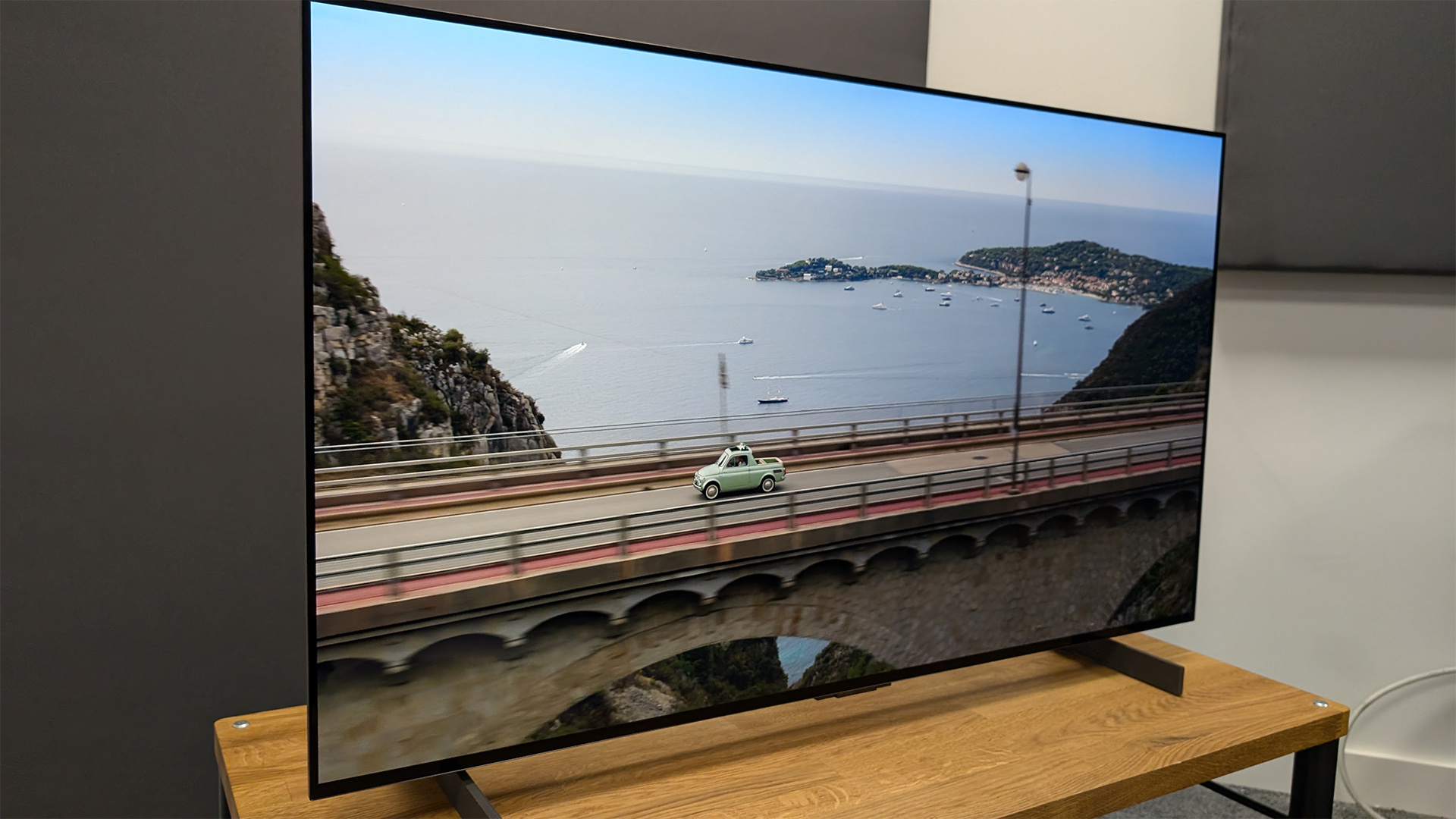
Regular HDR support is also solid, with the C4 working with the HDR10, Dolby Vision and HLG standards. Like all recent LG TVs the only omission is HDR10+, though as Prime Video is the only major streaming service supporting it – and it supports Dobly Vision as well – this is far from a deal breaker. On the off chance you feel that it is, you’ll be better off looking at a Samsung TV, such as the S95D, which supports the standard.
The inclusion of webOS 24 is another selling point. webOS has the best app support of any TV platform and an easy to use UI that even the most ardent of luddites should be able to navigate.
All the common streaming services including Netflix, Prime Video, Disney Plus and Apple TV+ are present. There is also a solid selection of more specialist services including Shudder, CrunchyRoll, WoW and their ilk, which are well supported and receive frequent over the air software updates.
In the UK the usual catchup services are present, including ITVX, 4, My5 and BBC iPlayer. For gamers there’s also GeForce Now, Steamlink and more, which all ran smoothly during our checks thanks to the use of LG’s Alpha 9 Gen 7 processor.
Though this isn’t the most powerful chip in LG’s arsenal, sitting below the Alpha 11 in the G4, it is more than capable of keeping webOS 24 running smoothly. It also brings with it a wealth of useful features including virtual 11.1.2 sound upmixing and an enhanced voice remastering feature alongside various picture processing improvements on the older C3.
Picture
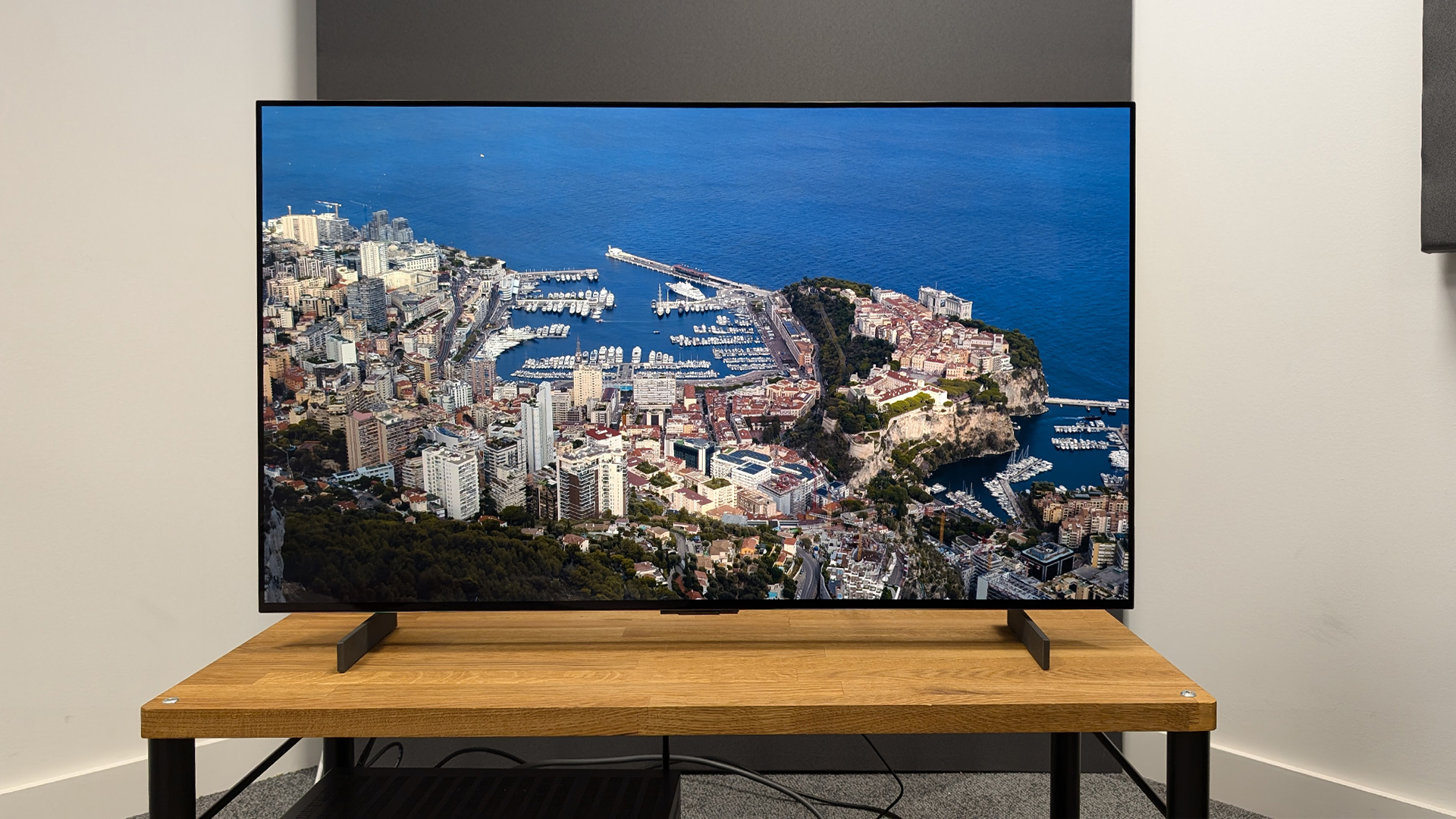
Speaking of picture quality, having run the 42-inch C4 head-to-head with its 48-inch sibling, and larger variants of other step-down OLEDs, including the Bravia 8, we can safely confirm it is the best 42-inch OLED that we've tested.
We start with our Top Gun: Maverick test disc running on our reference Oppo UDP203 Blu-Ray player as the source. As with all our tests, the signal is set to send in its native format, so all the processing and upscaling (not that there's any upscaling needed for a 4K disc, of course) is handled by the TV.
As is the case with nearly every OLED we review, we quickly find ourselves dialling down the TV’s picture settings to get the best results. The standard mode overcooks scenes, pushing colours and peak brightness levels too hard, adding an artificiality to the image. Gradually dialling back the settings we get the best results with the 42-inch C4 set to its Filmmaker Mode with Cinematic Movement active.
Once done the results are excellent. The C4 delivers brilliant peaks, with the sun reflecting in the ocean in Maverick, revealing impressive levels of detail and a true sense of three dimensionality as the rippling waves cascade into the distance. Contrast levels as the movie transitions to Maverick riding his motorbike through the desert are wide and impactful. Movements look wonderfully smooth and artefacts never creep into the rapid movement of the bike. All-in-all, the panning shot feels smooth and natural from start to finish.
This remains true moving to a desert battle scene in Dune Part 2. The 42-inch C4’s incredible light control ensures the desert sand sparkles as the sun drips over it. The TV serves up wonderful levels of detail and a wide hue that brings the landscape truly to life. Movements look natural, and even the most challenging parts of the picture, such as the rapidly buzzing wings of the Ornithopter and characters’ movements during fast paced knife fights, never fall victim to over-smoothening and the dreaded soap opera effect. Everything just looks natural.
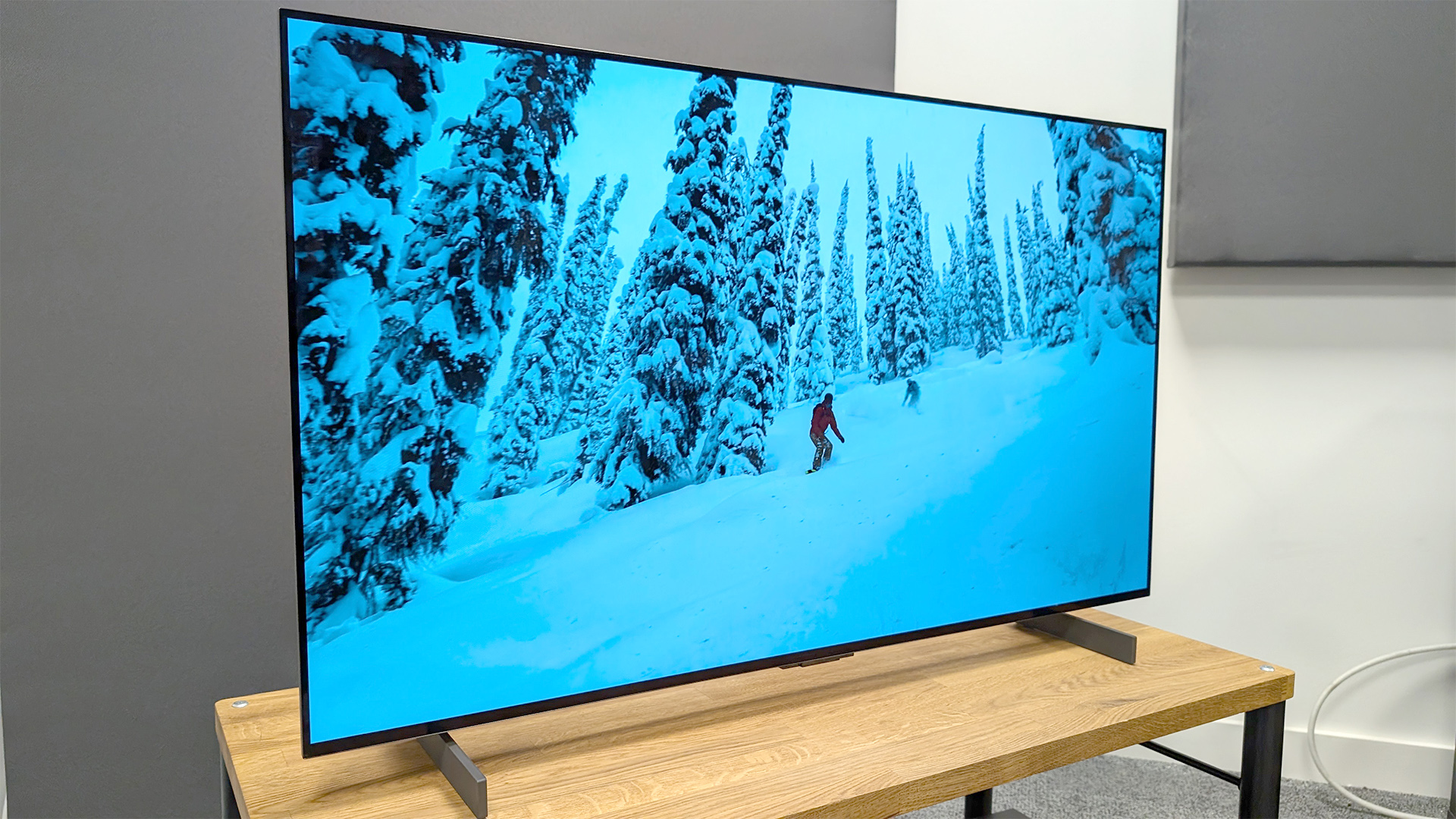
Moving to Pan, our standard stress test for a TV’s peak brightness due to its atypical 4000 nits mastering, the C4’s strengths continue to shine. As the pirate's flying ship sails into the distance, the setting sun retains impressive amounts of detail and colours continue to look accurate and warm. The small C4 creates a stellar spectacle that matches what’s being shown on its larger 48-inch sibling and beats the peaks offered by the older C3.
We only notice slight issues moving to darker scenes, starting with our tried and tested Blade Runner 2049 disc.
As Ryan Gosling’s character enters the decrepit old house on the futuristic protein farm, colours have a slightly cool, blue tone, not present on the other C4 sizes. Dave Bautista’s skin loses some of the warmth offered by the larger C4 models. This means that in colour temperature terms, the 42-inch model produces similar results to those on the larger Bravia 8, rather than the 48-inch C4.
Characters' faces lose some of their three-dimensionality as the cooler palette removes contrast in darker sections of the picture – though detail levels otherwise remain excellent. Whites also feel slightly washed out, with the larger C4 offering more sepia tones and detail in the light areas of the otherwise near pitch black environment. We see this in particular in the kitchen windows, where the 48-inch C4’s added details make it feel ever so slightly more authentic.
This trend continues as we switch to Oppenheimer, a very dim movie capped to peaks of just 200 nits. The black and white test scene retains oodles of detail, with the stitching on characters’ suits fully visible. But the white sections feel more sterile, and contrast between dark and light sections is starker and ever so slightly less natural than the results we see on the warmer 48-inch C4.
The issue continues as we switch to True Grit, our tried and tested SD movie for upscaling due to its intentionally grainy quality. The C4 manages to retain the grain and serves up lovely details, with the knitted fabric of characters’ period-accurate clothes looking wonderfully authentic and natural. There’s no hint of oversharpening or smoothing. But dark sections occasionally lose detail and look slightly flattened.
Sound
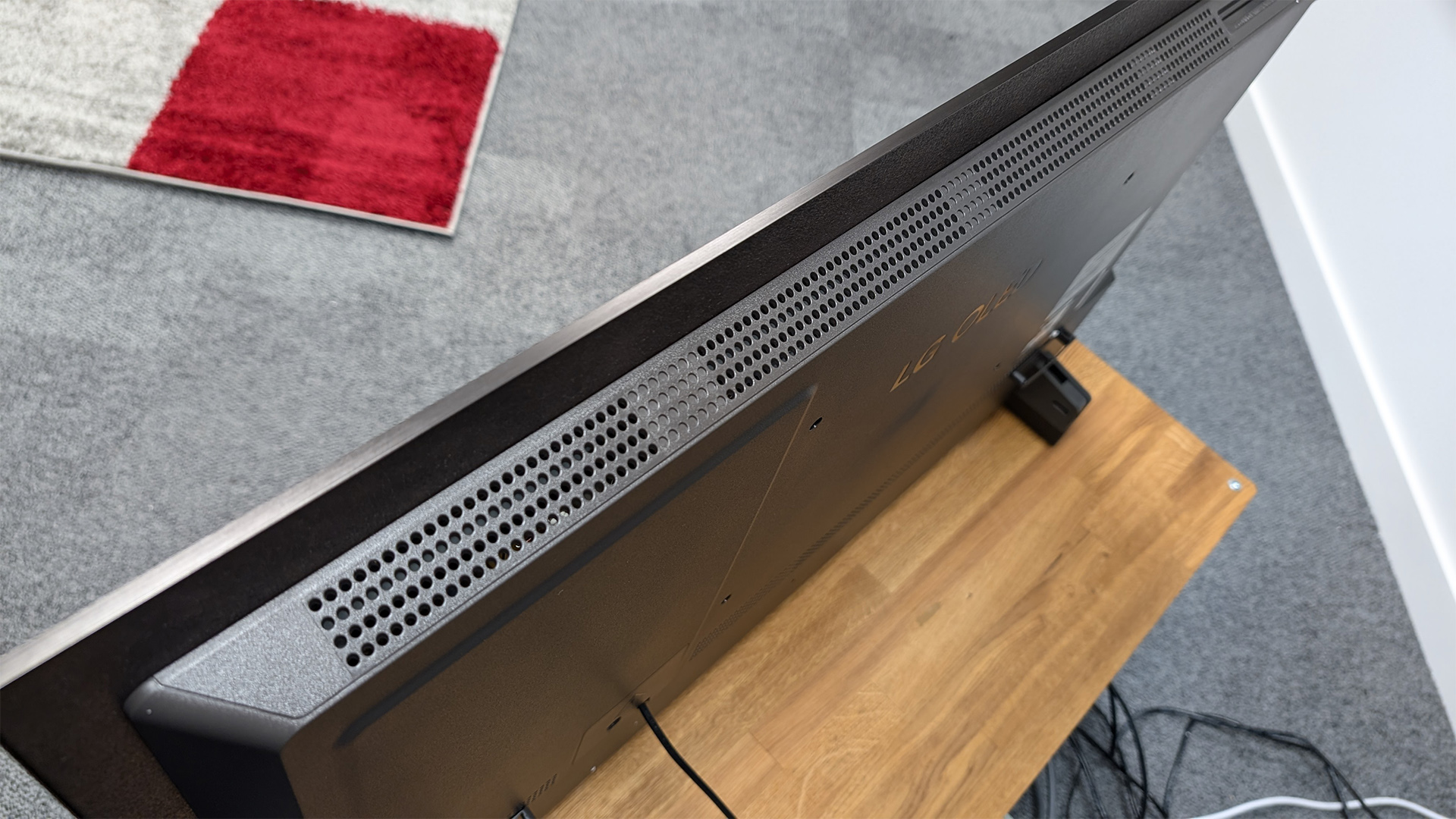
Most inbuilt TV speaker systems are passable at best. This is particularly true of 42-inch sets, as one of the biggest challenges in creating one is the lack of physical space inherent with a modern, flatscreen TV’s form factor.
This trend continues with the 42-inch LG C4, which packs a modest 20W, 2.0 speaker system. LG made a lot of noise about the TV’s AI Sound feature, which aims to improve general audio quality and virtual surround-sound accuracy. However, beginning with the opening scene of Top Gun: Maverick, results are immediately compromised with the AI audio features active.
Zooming jet engines leap from left to right, but the direction doesn’t mirror what’s happening on screen, causing distraction, rather than improving immersion. Switching to standard the audio becomes distinctively flat, with background noise, and the soundtrack overlapping – making entire sections of Kenny Loggins’ iconic anthem, Danger Zone, hard to hear.
Switching to the Cinema setting we get the best results, but they’re still far from perfect. The soundtrack’s drums sound more separated and distinct, but sibilance and an unwelcome fizzy quality sneak into higher-frequency parts of the audio and they still lack weight.
The issue becomes more prevalent when we switch to Blade Runner 2049. As a flying car zooms through a future cityscape, the 42-inch C4 immediately struggles to deliver the booming low-end synth section of the soundtrack and distorts, even with the volume set to 60 per cent. There is a general lack of precision, with the low-end being too thin to immerse you.
As a character talks to a hologram moving around K's flat, the speakers don’t deliver enough separation from the rest of the audio and lack direction. Every part of the sound comes directly from the centre of the TV. This means the need to invest in a small but competent soundbar to get the best results possible is particularly pressing with the 42-inch LG C4.
Verdict
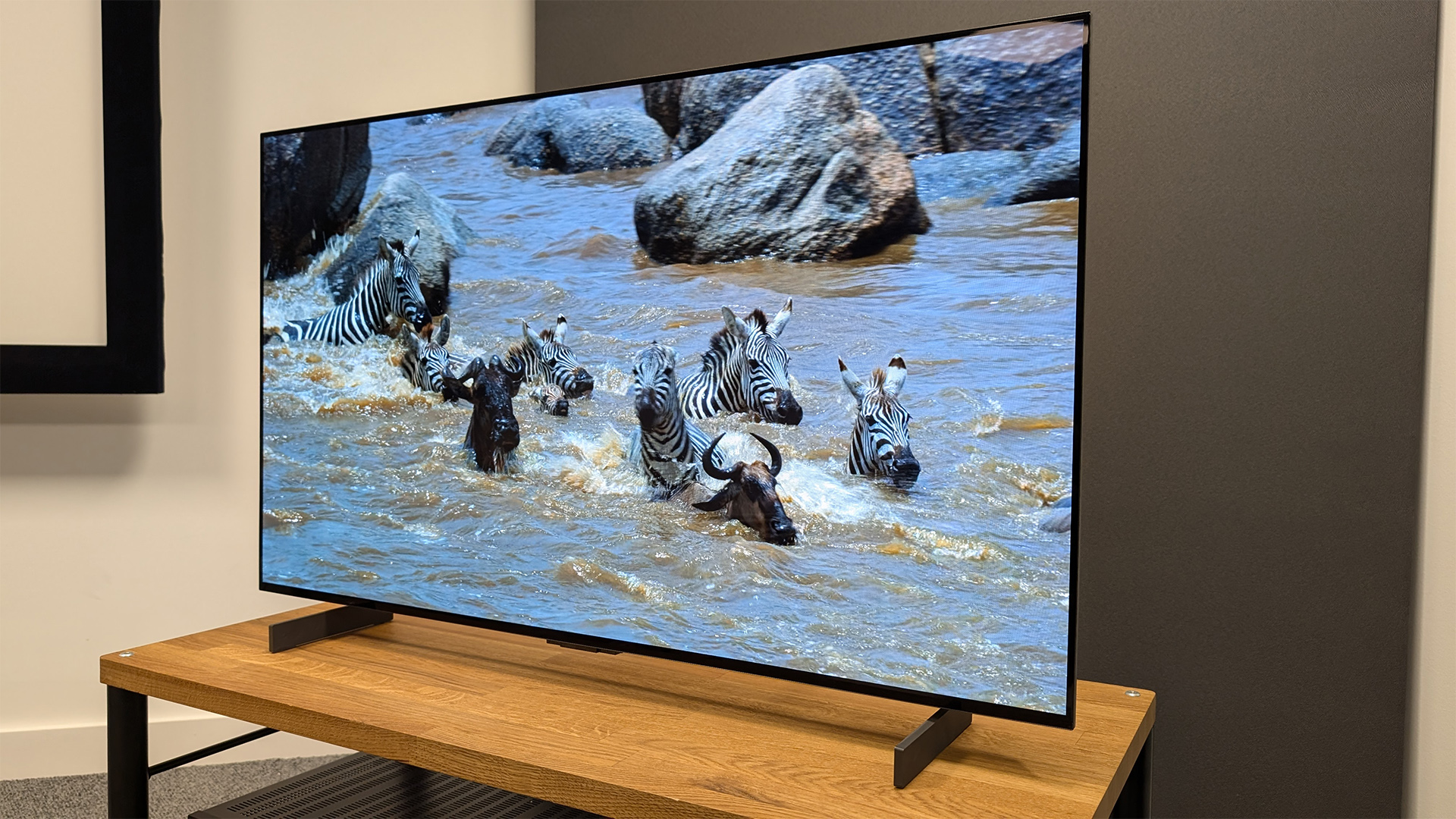
The 42-inch LG C4 is the best small OLED TV money can buy right now. Though its audio isn't the best, it delivers a wonderfully punchy, immersive viewing experience despite its small form factor, with noticeably higher peak brightness than its older rivals.
Picture-wise, the only minor downside is that it’s not quite as much of a night-and-day improvement on its predecessor as its larger C4 siblings. Colours aren’t quite as warm, and dark scenes feel slightly flat on occasion.
But even with that small caveat, trust us when we say that you won’t find a better small OLED for the same price – just remember to budget for a soundbar as well if you want the best experience possible.
SCORES
- Picture 5
- Sound 3
- Features 5
MORE:
Read our review of the Sony A80K
Also consider the Philips OLED809
Read our LG C3 review
Best TVs: flagship OLEDs and affordable flatscreens tried and tested







